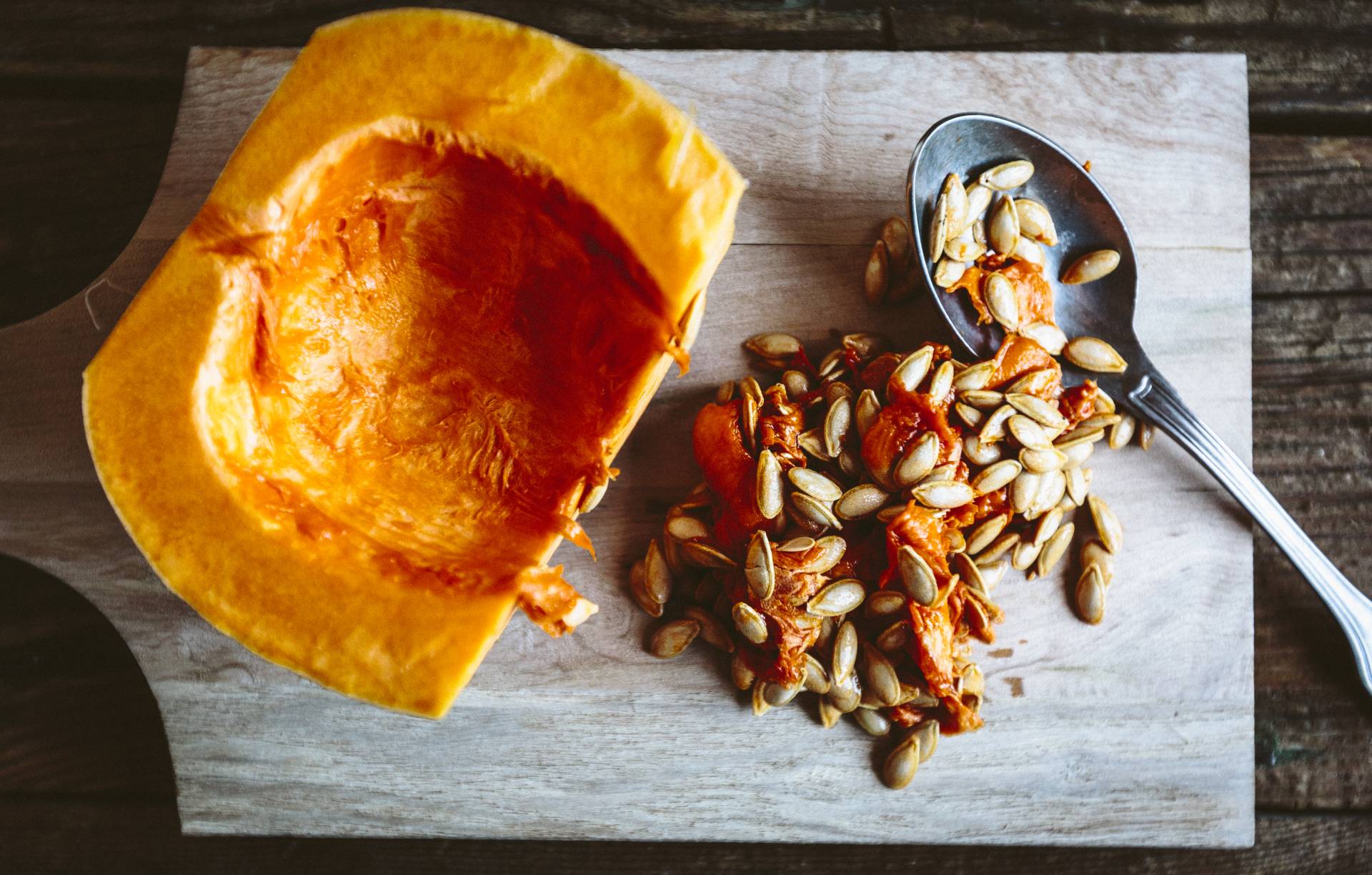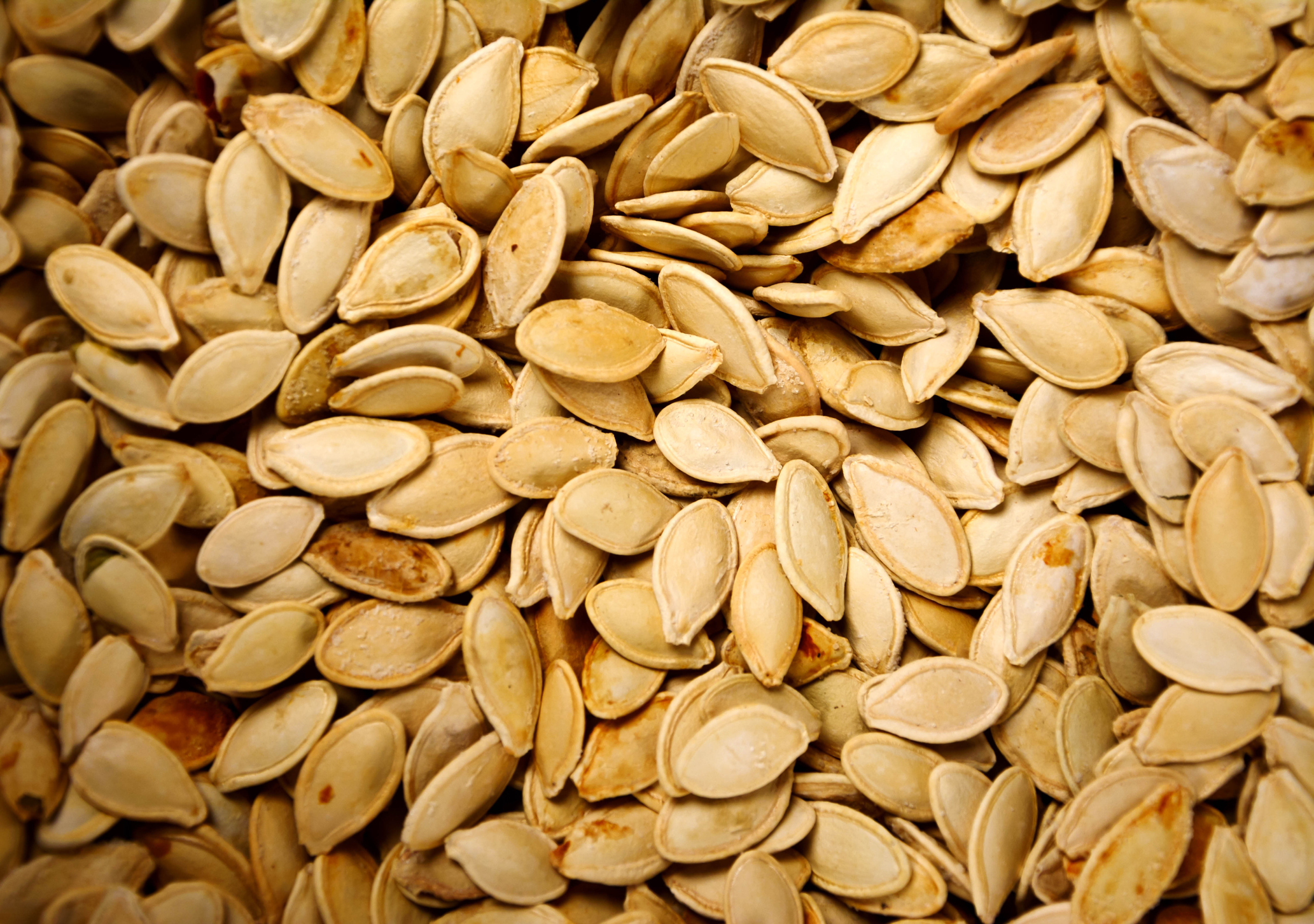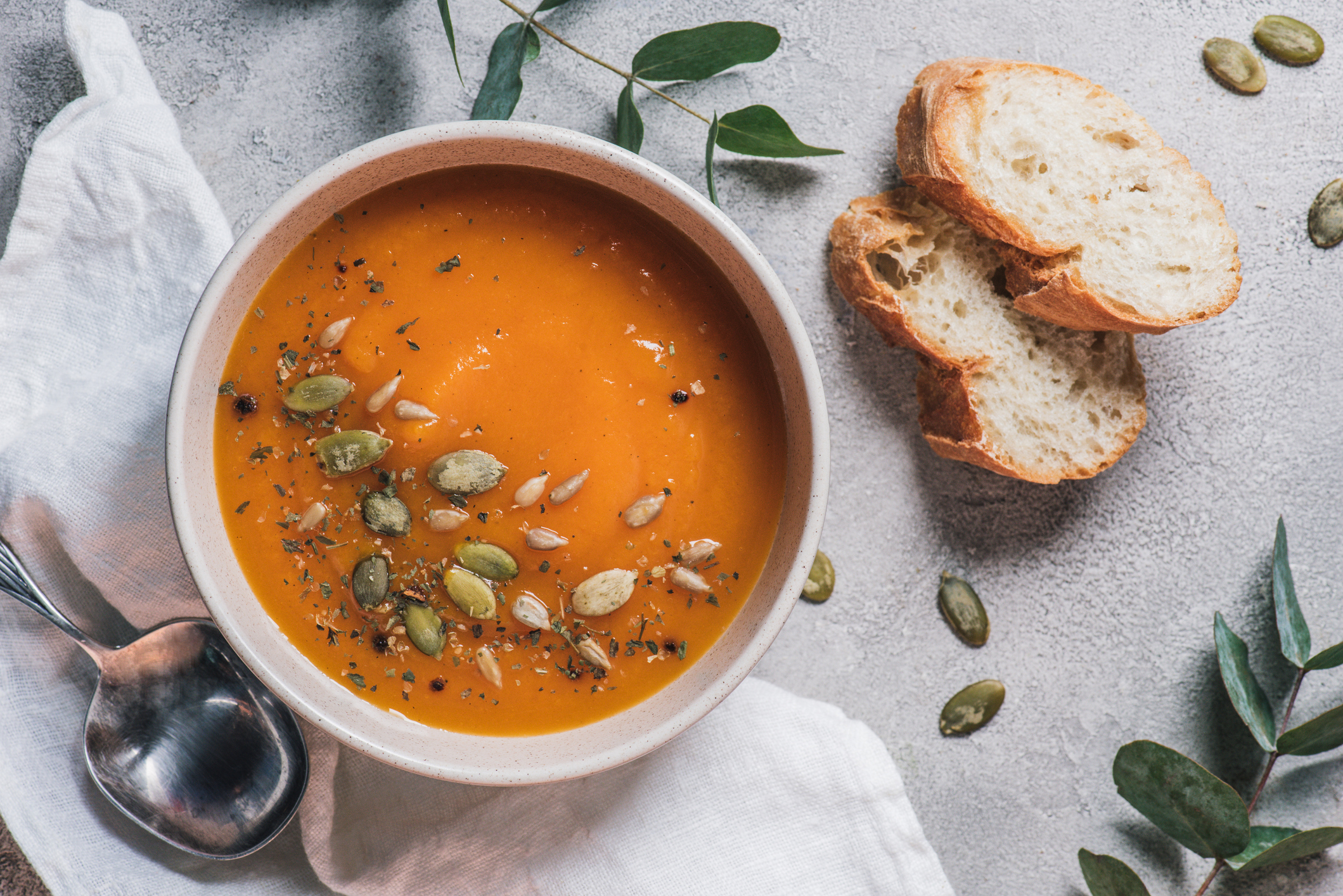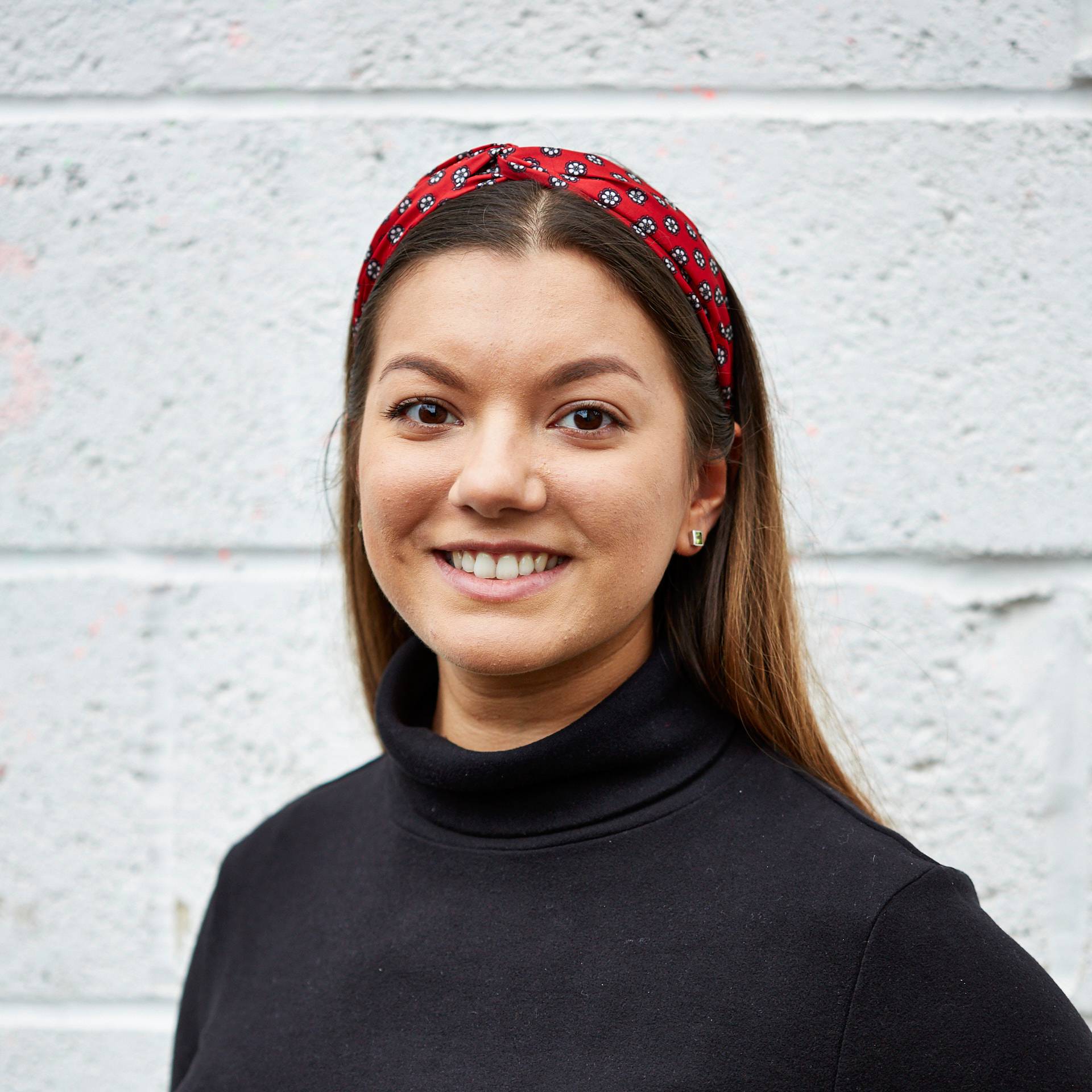How to roast pumpkin seeds - the easy way!
You’ll never throw them away again!


Whether you want a light nutritious snack or a quick way to add crunch to your salad, here’s how to cook pumpkin seeds - the easy way!
Pumpkin season runs from October to December in the UK and they come in a variety of shapes and sizes. The most recognisable pumpkin is the bulbous orange fruit, with a thick skin.
It should be celebrated on more than just Halloween as it’s full of vitamins and minerals and is rather delicious too. Plus, pumpkins come with an additional ingredient, the seeds! These can be cooked separately to make delicious snacks, soup and salad toppers or added to your favourite bakes.
The green pumpkin seeds you’re familiar with seeing, are the raw white seeds from within the pumpkin with the shells removed. It’s very tricky to de-shell them at home but the raw casing can be cooked and eaten, the end product just isn’t as tender and are tougher to chew.
Aside from tasting great, pumpkin and pumpkin seeds are incredibly good for you.
Nutritionist Fiona Hunter, explains: ‘Pumpkin seeds are a good source of zinc, which helps to keep your immune system healthy by boosting the production of cells that fight bacteria and viruses. Zinc is also essential for healthy skin.
Some studies show that people with acne often have low levels of zinc in their blood.’
Parenting advice, hot topics, best buys and family finance tips delivered straight to your inbox.
So if you do suffer from spots or acne, it’s worth trying to increase your zinc intake and pumpkin seeds are an easy way to do this.
READ MORE: How to use up leftover pumpkin
Fiona adds: ‘They also contain protein, fibre and the minerals magnesium and iron. Just 25g of pumpkin seeds will provide almost a third of the recommended daily amount of zinc and 20% of your recommended daily amount iron. This makes them a great choice for vegetarians and people who don’t eat much meat.’
Now that you’re up to scratch with why you should never throw the seeds away again, here’s everything you need to know about cooking them!
How to prepare pumpkin seeds

If you are cooking raw pumpkin seeds, you will first need to scrape them out of your pumpkin. Try to only get the seeds out, separate them from any flesh.
Give the seeds a gentle wash in some water, remove any stubborn bits of pumpkin flesh and give them a dry in a clean teatowel.
Transfer to a bowl and coat in a little olive oil, plus your chosen flavourings. We recommend sea salt as the minimum flavouring, even if you’re going to add the seeds to sweet recipes - just don’t go too crazy! Start with a pinch and adjust in your next batch if you’d like more.
If you need some flavour inspiration, think about common nut flavourings. Chilli flakes and fennel, finely chopped rosemary and garlic granules or even just black pepper are all good places to start.
How to cook pumpkin seeds
To cook the raw flavoured pumpkin seeds, preheat your oven to 180C, 160C fan, Gas 4. Get a large baking tray and lined with baking parchment.
- Spread the flavoured seeds in a single layer on the baking tray, trying not to overcrowd.
- Cook for 8-12 mins until browning and crisp but not charred.You’ll need to keep an eye on them as they can quickly catch. You’ll also notice that seeds on different parts of the tray will cook quicker than others as your oven is hotter here. Remove these seeds as and when you see to stop them from burning.
- Allow the seeds to cool completely before eating. If you are just flavouring shop-bought pumpkin seeds, reduce the oven temp to 170C, 150C fan, Gas 3. Cook for 10-15 mins and once again, keep your eye on them.
Everyone’s ovens are a little different so adjust the time for as long as you need for the seeds to be crisp. Leave to cool before eating or storing.
Top tips for cooking pumpkin seeds
When cooking pumpkin seeds, there are two important things to remember. Firstly, don’t be afraid to experiment with your flavours - you might just discover your new favourite snack!
And secondly, be patient. Try not to overcrowd your baking tray. Cook the seeds in batches if necessary and don’t increase the oven temperature to quicken the process. The seeds will end up charred on the outside but not completely dry on the inside so they will go soft as they cool.

What can pumpkin seeds be used for?
Pumpkin seeds make a delicious snack when you’re on the go and you can experiment with the flavourings. They are a good alternative to nuts and can be bought in bulk.
Alternatively, you can cook the seeds found inside a pumpkin if you’re preparing the pumpkin for carving or for another recipe. This is not only thrifty but it also reduces food waste!
Try adding pumpkin seeds to your salads for flavour and texture. You can also mix pumpkin seeds with breadcrumbs for the crunchy topping on pasta bake. Tom Kerridge’s creamy butternut squash pasta bake recipe is a good place to start for inspiration. You can also swap the squash for a pumpkin puree instead.
Pumpkin seeds can also be used in sweet recipes. Try making homemade granola, or adding them to treats like our porridge bars, seeded flapjacks or these breakfast muffins.
How to store pumpkin seeds: cooked and uncooked
If you’re not going to cook the seeds straight away, wash them and remove the pulp. Dry the seeds thoroughly then transfer to a tub and refrigerate. Cook within two days.
The cooked seeds will last for a couple of days in an airtight container. After that, they may go a little soft but they’ll still be edible.
You could still mix them into your pasta bake topping or thrown into your bakes as they will crisp up a little more once recooked.
Feeling inspired? Which pumpkin seed recipe will you make first? Head to our social pages to share any other tips or flavour combinations you discover!

Jessica is a freelance food writer, stylist and recipe tester. She previously worked as Senior Food Writer at Future. While at Future Jessica wrote food and drink-related news stories and features, curated product pages, reviewed equipment, and developed recipes that she then styled on food shoots. She is an enthusiastic, self-taught cook who adores eating out and sharing great food and drink with friends and family. She has completed the Level 1 Associate course at the Academy of Cheese and is continually building on her knowledge of beers, wines, and spirits.